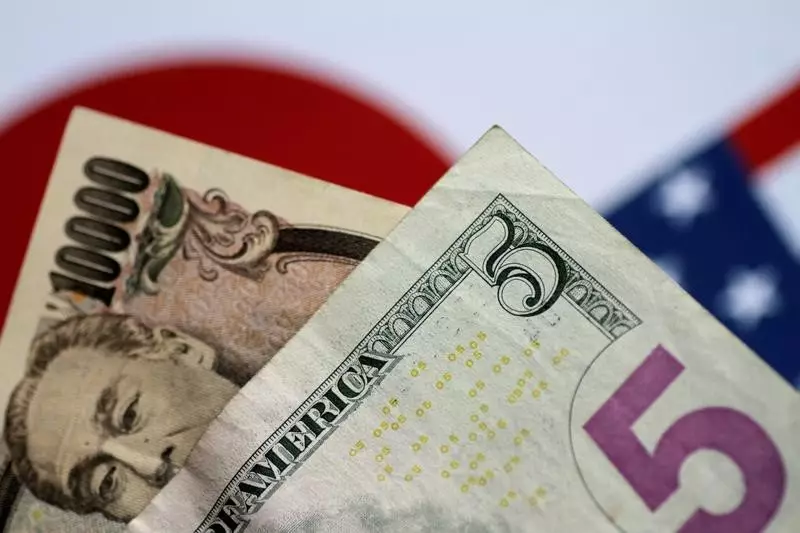As we move closer to 2024, the financial landscape surrounding the U.S. dollar and the Japanese yen becomes increasingly intricate, especially in light of anticipated rate cuts by the U.S. Federal Reserve (Fed). Currency strategists and investors are intensely scrutinizing the USD/JPY pair, seeking to understand how these potential changes in U.S. monetary policy will impact the currency market amid opposing approaches from the Bank of Japan (BoJ).
Divergent Monetary Policies: An Overview
The Fed and the BoJ have maintained contrasting monetary policies for several years. The Fed, under the pressure of fluctuating inflation and economic growth, is hinting at a potential pivot, which might include rate reductions. Conversely, the BoJ has persistently upheld its ultra-accommodative stance to stimulate a sluggish economy. This divergence raises critical questions about the future trajectory of the USD/JPY pair and creates a complex environment for market participants who are attempting to forecast currency fluctuations in response to Fed actions.
The relationship between Fed rate cuts and the USD/JPY exchange rate is far from straightforward. Historical trends indicate that the USD/JPY has not consistently weakened during Fed easing cycles. For instance, during the 2007-2008 Global Financial Crisis, we observed a significant appreciation of the yen, primarily due to the unwinding of the yen carry trade. This phenomenon starkly contrasts typical expectations, where the idea would be a corresponding decline in the yen’s value amidst U.S. monetary easing.
Further analysis of earlier rate cuts, such as those executed during the mid-1990s and early 2000s, reveals that the yen did not experience considerable depreciation. These historical patterns suggest that broader economic contexts, especially those prevailing within the U.S. economy, play a pivotal role in determining the outcomes of Fed policies on USD/JPY.
One of the key reasons analysts, including those from Bank of America (BofA), pinpoint for the likely resilience of the USD/JPY pair is the evolution of Japan’s capital flows. Over the last decade, Japanese investors have transitioned their holdings from foreign debt instruments to foreign direct investments (FDI) and equities. Unlike bonds, which are typically sensitive to adjustments in interest rates, FDI and equities are more influenced by the long-term growth trajectories of companies and sectors.
This transition implies that potential Fed rate cuts might not prompt a mass repatriation of capital back to Japan—an outcome that would traditionally favor a stronger yen. Instead, Japanese life insurers and other institutional investors are likely to maintain their portfolios, leading to sustained or even robust demand for USD over JPY.
Demographic Challenges and Outward Investment
Japan’s demographic issues intensify the narrative surrounding capital flow. The nation is grappling with an aging population and a declining workforce, problems that generate an increased need for outflows into foreign investments as domestic growth falters. Such structural factors effectively position Japan’s capital movement as being less responsive to U.S. interest rate shifts.
Furthermore, the increase in retail investment exposure to foreign equities, facilitated through modified investment platforms like the Nikkei Individual Savings Account (NISA), suggests a sustained commitment to international markets. As Japanese investors adopt a strategy favoring long-term assets over short-term speculative gains, the resulting trading behavior could further limit any bullish trends for the yen even if U.S. rates decline.
The Path Ahead: Balancing Monetary Policy Outcomes
Looking ahead, predictions concerning the Fed’s future rate-cutting trajectory suggest a gradual approach rather than a drastic overhaul, with many experts anticipating only a modest number of cuts through 2024. If this scenario unfolds, the USD/JPY is likely to remain elevated since markets have already priced in these moderate rate reductions.
However, it is essential to remain cognizant of potential economic shifts. In the event of a recession, a more aggressive Fed response could drive USD/JPY down significantly. Conversely, if the U.S. economy rebounds strongly and inflationary pressures perpetuate, the USD/JPY could even surge past levels not seen for years, highlighting the importance of real-time economic data in shaping currency valuations.
Conclusion: USD/JPY’s Future Is A Multi-Faceted Equation
Ultimately, the trajectory of the USD/JPY exchange rate in the context of potential Fed interest rate cuts will hinge not merely on U.S. monetary policy but also on a tapestry of systemic factors, including Japan’s demographic trends, investment patterns, and the overall health of the U.S. economy. Investors must prepare for a complex interplay of these elements as they navigate forecast changes, underpinning the necessity of a nuanced understanding of both countries’ economic landscapes in the modern trading environment.

